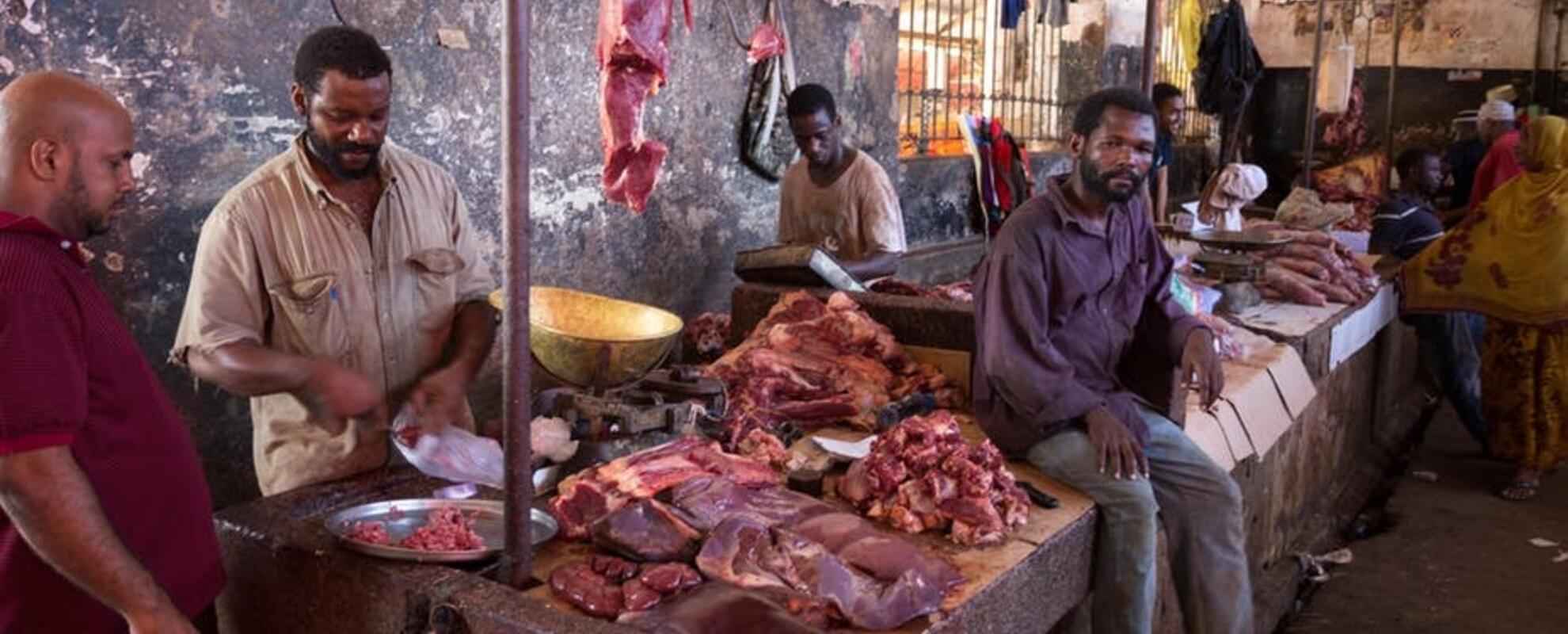
Why food safety in Africa’s informal markets must be driven by consumers
Opinion piece by Arie Havelaar, University of Florida and Ashagrie Zewdu Woldegiorgis, Addis Ababa University. This article is republished from The Conversation under a Creative Commons license. Read the original article published on #WorldFoodSafetyDay. @gatesfoundation, @DFIDAgResearch and @DFID_Research.
Listeria in processed meat products from South Africa, E. Coli in romaine lettuce in the US, Salmonella in eggs across Europe and Campylobacter in chicken liver pâté in Australia. These are among the many pathogens and foods at the centre of recent food safety crises worldwide, estimated to impact as many people as infectious diseases such as HIV/AIDS, malaria and TB.
But while deaths and illnesses from unsafe food hit countries worldwide, the incidences of these illnesses and lost lives are disproportionately high in Africa.
Across the continent, tainted food kills about 140 000 people every year, and leaves 91 million more suffering from diarrhoea, tapeworm, hepatitis and even dysentery and typhoid.
This is on course to become even worse as income growth and urbanisation in Africa are enabling better, more diverse diets. Ironically, these healthier foods – such as dairy, eggs, meat, fruits and vegetables – are more likely to be contaminated.
Because the food system across most of Africa is largely informal and unregulated, pinpointing the source of food illness, critical to its eradication, is challenging. It could be meat contaminated in an abattoir, listeria-tainted food doled out from a food cart or mold-infected grain baked into bread.
Contaminated food will continue to be a public menace until countries implement systems ensuring the safety and quality of food throughout the food chain — from the farm to the table.
Limited knowledge
Ethiopia is among the first African countries to prioritise food safety. Deaths and illnesses from a range of food borne pathogens are commonplace. Adulteration is also rampant. Producers of the beloved national dish, injera, have even been caught mixing sawdust with teff flour for economic gain.
The Ministry of Health is developing a functional food safety system that incentivises companies to deliver safer food and regulates those who don’t deliver standard food products.
But Ethiopia, and countries like it, won’t conquer the complex food safety challenges that come with informal food systems until everyday consumers are empowered to become the first line of defence against unsafe food.
In many countries across the globe, well-informed consumers — often with the help of lawyers and NGOs – have successfully used their purchasing power to compel bad-acting companies to fall in line with food safety standards.
African consumers could likewise become catalysts for better food. But before this power can be unlocked citizens need a crash course in food safety. Right now, this knowledge is limited. This is certainly the case in Ethiopia where we are involved in ongoing research
The country’s consumption of raw foods illustrates the case. Raw beef is deeply embedded in Ethiopian food culture. People are aware it could make them sick, yet they don’t know how to ensure it’s safe — and they don’t want to give it up. Raw milk is also beloved. But a study found that most households were unaware of milk-borne diseases.
Lessons from elsewhere
In the UK and elsewhere in Europe, consumer faith in beef collapsed after an outbreak of Bovine Spongiform Encephalopathy. The result was that the European Union’s food safety system was completely overhauled to win back trust.
And in South Africa, the company responsible for the Listeria-tainted bologna that killed 200 people faces class action lawsuits from the families of the victims.
In Ethiopia, new research – jointly funded by the UK Government’s Department for International Development and the Bill & Melinda Gates Foundation – underway is trying to determine how consumers’ relationship with food can be transformed to improve food safety in informal markets for vegetables and poultry. We’re focused in areas where monitoring and regulation is difficult to achieve.
While previous efforts to weed out bad food have focused on training producers or regulators, this project also seeks to harness the voice of consumers.
Related studies in the country are devising how to manage the health risks of raw foods. Other factors being looked into are foodborne disease epidemiology, surveillance and control. A central aim is to build the know-how Ethiopian government officials, academics and consumers need to take on foodborne illnesses.
These initiatives demonstrate that policymakers, donors and researchers are increasingly asking themselves how they can tackle food safety challenges to ensure food is not just plentiful and nutritious, but also safe.
Turning point
A 2015 report offering the first-ever estimates of the incidence, mortality and disease burden due to 31 foodborne hazards worldwide marked a turning point in this thinking.
Fuelling this momentum, the Food and Agriculture Organisation of the United Nations, the World Bank and the African Union co-hosted two of the largest international gatherings on food safety this year, which took place in Switzerland and Ethiopia.
Clearly, international and national actors are moving in the right direction, but more must be done to maximise the role of consumers — where they buy and eat the food, whether it’s in markets, food stalls or at dining tables.
A bottom up approach that educates and empowers consumers is the only way to ensure that the drive toward healthier, more sustainable diets delivered through agriculture doesn’t neglect the role of food safety in securing the health of millions.![]()
Arie Havelaar, Professor, University of Florida and Ashagrie Zewdu Woldegiorgis, Assistant Professor, Addis Ababa University





















